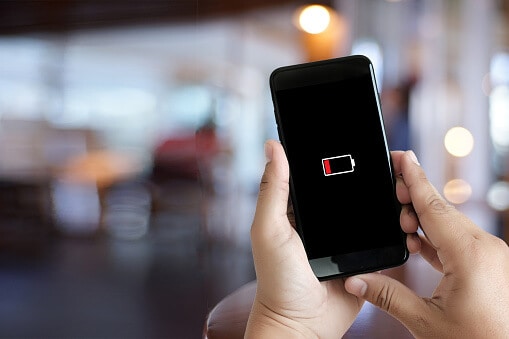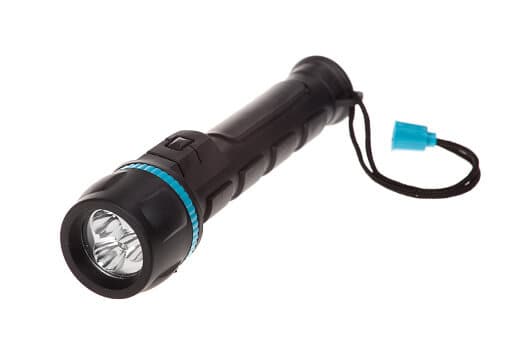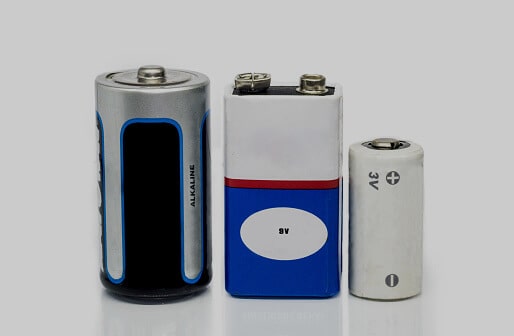How Do Batteries Work?
Have you ever found yourself curious about how batteries work, especially when it comes to powering our homes? As we strive for greater energy independence and explore alternative energy solutions, understanding the intricacies of battery technology becomes increasingly important. In this comprehensive guide, we will take a personal journey into the world of batteries and unravel the science behind their operation. By gaining insights into how batteries work, we can explore their potential applications for residential energy storage, the advantages they offer, and the exciting future of battery technology. So, join me as we embark on an illuminating exploration of batteries and their role in powering our homes.
What Are Batteries?
Batteries are fascinating electrochemical devices that play a vital role in our modern lives by storing and releasing electrical energy through carefully orchestrated chemical reactions. These portable power sources are comprised of one or more electrochemical cells, which are the building blocks of batteries. Within each cell, chemical energy is converted into electrical energy, enabling the battery to provide the power we rely on.
At the heart of every cell, we find three essential components: the anode, the cathode, and the electrolyte. The anode serves as the negative electrode, while the cathode acts as the positive electrode. These electrodes are made from materials specifically chosen for their ability to facilitate the transfer of electrons during the battery's operation. Separating the anode and cathode is the electrolyte, a substance that allows the movement of ions between the electrodes.

The Basics of Battery Chemistry
Battery chemistry is a fascinating field that delves into the intricate processes and reactions that power our everyday devices. Let's dive deeper into the basics of battery chemistry and understand the key components and reactions involved:
Electrodes
The anode and cathode are the two electrodes within a battery that enable the flow of electrons. The anode is the negative electrode, while the cathode is the positive electrode. These electrodes are typically made of different materials, each chosen for its specific electrochemical properties.
Electrolyte
The electrolyte is a crucial component of the battery that acts as a medium for ion transport between the electrodes. It can be a liquid, gel, or solid substance, depending on the type of battery. The electrolyte allows the movement of charged particles called ions, which are necessary for the electrochemical reactions to occur.
Redox Reactions
The key driving force behind battery chemistry is the redox (reduction-oxidation) reactions that take place at the electrodes. In the anode, oxidation occurs as the electrode releases electrons, while reduction occurs at the cathode as the electrode absorbs electrons.
Ion Movement
During battery operation, ions move through the electrolyte between the anode and cathode. This movement is facilitated by the electrolyte, which allows the ions to travel from one electrode to the other. The flow of ions creates a balance of charge and enables the continuous flow of electrons through the external circuit.
Charging and Discharging
Batteries can be charged and discharged, which involves the movement of electrons and ions. During charging, an external power source applies a higher voltage to the battery, causing the electrochemical reactions to reverse. This allows the battery to store energy as chemical potential. During discharging, the stored energy is released as electrons flow from the anode to the cathode through the external circuit, creating an electrical current.
Battery Types
There are various types of batteries, each with its unique chemistry and characteristics. Some common types include lead-acid batteries, lithium-ion batteries, nickel-metal hydride batteries, and alkaline batteries. Each type has specific electrode materials and electrolytes tailored to optimize performance and meet the requirements of different applications.
Video about How Do Rechargeable Batteries Work?
How Do Batteries Generate Electricity?
To understand how batteries generate electricity, let's explore the two main categories of batteries: primary (non-rechargeable) and secondary (rechargeable). Each type functions differently, offering unique capabilities for various applications. Here's a detailed breakdown of how these batteries generate electrical energy:
Primary Batteries:
Chemical Reaction
Primary batteries generate electricity through a chemical reaction that occurs within the battery. This reaction is typically irreversible, meaning it cannot be reversed to recharge the battery. The chemical components within the battery undergo a series of reactions that result in the production of electrons and current flow.
Disposable
Primary batteries are designed for one-time use and are not intended to be recharged. Once the chemical reaction is complete and the energy stored in the battery is depleted, the battery becomes non-functional and needs to be replaced.
Common Types
Examples of primary batteries include alkaline batteries, zinc-carbon batteries, and lithium primary batteries. These batteries find widespread use in devices such as remote controls, toys, and small electronic devices.
Secondary Batteries:
Rechargeable Capability
Unlike primary batteries, secondary batteries can be recharged multiple times. They utilize reversible chemical reactions, allowing the battery to be charged and discharged numerous times without significant degradation in performance.
Charging Process
When a secondary battery is charged, an external power source, such as a charger, applies an electrical current to the battery. This current triggers a chemical reaction that reverses the discharge process, restoring the battery's energy storage capacity.
Discharging Process
During the discharging process, the battery's stored energy is released as electrical energy. The chemical reactions within the battery produce a flow of electrons that can be used to power various devices or systems.
Common Types
Popular examples of secondary batteries include lithium-ion batteries, nickel-metal hydride (NiMH) batteries, and lead-acid batteries. These batteries are widely used in applications such as electric vehicles, laptops, smartphones, and renewable energy storage systems.
Electrodes and Electrolyte
Secondary batteries consist of electrodes and an electrolyte. The electrodes are typically made of materials that can store and release ions during charging and discharging. The electrolyte facilitates the movement of ions between the electrodes, enabling the battery's electrochemical reactions.
Energy Density and Cycle Life
Secondary batteries offer varying energy densities and cycle lives, depending on the specific chemistry and design. Energy density refers to the amount of energy stored per unit mass or volume, while cycle life refers to the number of charge-discharge cycles a battery can undergo before experiencing a significant decline in performance.

Battery Types and Technologies
When it comes to a battery is a source of, there are several types and technologies available, each with its own unique characteristics and applications. Let's dive into the details of different battery types and technologies:
Alkaline Batteries
Alkaline batteries are commonly used in everyday devices such as remote controls, toys, and flashlights. They are cost-effective and readily available. Alkaline batteries use a zinc anode and a manganese dioxide cathode, with an alkaline electrolyte (usually potassium hydroxide). They offer a relatively long shelf life and provide stable voltage output during discharge. However, they have limited rechargeability and are not as suitable for high-drain devices.
Lithium-ion Batteries
Lithium-ion (Li-ion) batteries have gained immense popularity due to their high energy density, lightweight design, and rechargeable nature. They are commonly used in portable electronic devices like smartphones, laptops, and electric vehicles. Li-ion batteries utilize lithium compounds as the active materials in the electrodes. They have a higher energy density compared to other battery types, providing longer runtimes. Li-ion batteries also have a low self-discharge rate and are capable of fast charging. However, they require protection circuitry to prevent overcharging and over-discharging.
Nickel-Metal Hydride (NiMH) Batteries
NiMH batteries are widely used in applications such as digital cameras, cordless phones, and power tools. They offer a higher energy density than alkaline batteries and are rechargeable, making them more environmentally friendly. NiMH batteries use a hydrogen-absorbing alloy in the anode, a nickel-based compound in the cathode, and a potassium hydroxide electrolyte. They can deliver a higher current than alkaline batteries and have improved cycle life. However, they have a higher self-discharge rate and lower energy density compared to Li-ion batteries.
Lead-Acid Batteries
Lead-acid batteries have been in use for over a century and are commonly found in automotive applications, uninterruptible power supplies (UPS), and renewable energy systems. They consist of lead-based electrodes and a sulfuric acid electrolyte. Lead-acid batteries are known for their ability to deliver high current, making them suitable for starting engines. They are relatively low-cost and have a good cycle life. However, they are heavy, have a lower energy density compared to other battery types, and require regular maintenance.
Other Battery Technologies
In addition to the above-mentioned batteries, there are several other emerging battery technologies that hold promise for various applications. These include solid-state batteries, flow batteries, sodium-ion batteries, and zinc-air batteries, among others. These technologies are still under development and offer unique advantages such as higher energy density, longer lifespan, and improved safety.

The Battery Charging Process
When it comes to charging batteries, there are various methods and techniques available to ensure optimal performance and longevity. Let's explore the detailed process of charging batteries:
Constant Current (CC) Charging
In this charging method, a constant current is supplied to the battery during the initial stage of charging. This ensures a controlled flow of electricity into the battery, preventing excessive current that could damage the battery. During this phase, the battery voltage gradually increases.
Constant Voltage (CV) Charging
Once the battery reaches a predetermined voltage, the charging method transitions to constant voltage charging. In this stage, the charging voltage is held constant while the charging current gradually decreases. This prevents overcharging and ensures the battery reaches its full charge capacity.
Trickle Charging
Trickle charging is a maintenance charging method used to keep batteries at their optimal charge level when they are not in use. It involves providing a low-level continuous charge, typically at a lower voltage and current, to compensate for self-discharge. Trickle charging helps extend battery life and ensures they are ready for use when needed.
Pulse Charging
Pulse charging is a technique that involves delivering short bursts of high current followed by a resting period. This method helps break down any crystalline formations that may have formed on the battery electrodes, improving battery performance and capacity. Pulse charging is often used for rejuvenating batteries that have been deeply discharged or have experienced reduced performance.
Equalization Charging
Equalization charging is a process used for lead-acid batteries, particularly in multi-cell systems. It involves applying a higher voltage to the battery pack for a specific period, allowing the weaker cells to catch up and reach a balanced state. Equalization charging helps prevent cell imbalances, improves overall battery performance, and extends battery life.
Battery Management Systems (BMS)
Battery Management Systems play a crucial role in optimizing the charging process. BMS monitors and controls the charging parameters, ensuring the battery is charged within safe limits and protecting it from overcharging, over-discharging, and other potentially damaging conditions. BMS also provides accurate battery state-of-charge information and helps balance the charge across individual cells in multi-cell battery packs.
Battery Performance and Lifespan
Battery performance is a critical aspect to consider when evaluating the capabilities of different battery types. Capacity refers to the amount of electrical energy a battery can store and deliver. It is typically measured in ampere-hours (Ah) or milliampere-hours (mAh). The higher the capacity, the longer the battery can power a device before requiring recharging.
Energy density is another important factor that determines the amount of energy a battery can store per unit of volume or weight. Batteries with higher energy density can provide more power while being smaller and lighter. This is particularly significant in portable electronic devices where space and weight are key considerations.
Self-discharge is the gradual loss of battery charge when not in use. Different battery chemistries have varying self-discharge rates. For example, alkaline batteries have relatively low self-discharge rates, while nickel-based batteries tend to self-discharge more quickly. Storage conditions, such as temperature and humidity, can also affect self-discharge rates.
Additionally, various factors can impact the lifespan of batteries. Charge cycles, which refer to the process of discharging and recharging a battery, can gradually reduce its overall capacity over time. Depth of discharge, which indicates how much of the battery's capacity is used during each charge cycle, can also influence its lifespan. Higher depth of discharge tends to result in a shorter battery life. Proper maintenance and adherence to manufacturer recommendations for charging and storage can help prolong battery lifespan.

How Lithium-ion Batteries Work
Lithium-ion batteries are a remarkable technology that has revolutionized the world of portable electronics and electric vehicles. These batteries operate based on the movement of lithium ions between the positive and negative electrodes, enabling the storage and release of electrical energy.
Inside a lithium-ion battery, the positive electrode, or cathode, is typically made of a lithium metal oxide compound, such as lithium cobalt oxide or lithium iron phosphate. The negative electrode, or anode, is usually made of carbon-based materials, such as graphite. Separating the electrodes is an electrolyte, which is a conductive material that allows the movement of lithium ions.
When the battery is charged, lithium ions are extracted from the cathode and move through the electrolyte to the anode, where they are stored. During discharge, the lithium ions flow back to the cathode, releasing electrons that travel through the external circuit to power the device. The movement of lithium ions back and forth between the electrodes enables the battery to store and deliver electrical energy efficiently.
Facts About Batteries
Within the battery, you have your separator. This highly important part of the battery functions by keeping anodes and cathodes far away from one another.
If you don’t have a separator, your electrodes will come into direct contact. When this happens, a short circuit occurs, and your battery isn’t going to work.
Understanding the different components of most batteries, you can now better appreciate how batteries work:
Separators
The separator is a critical component of a battery that physically keeps the anodes and cathodes separate. Its primary function is to prevent direct contact between the electrodes, which could lead to a short circuit and render the battery ineffective. By maintaining a barrier between the anode and cathode, the separator ensures the controlled flow of ions and electrons within the battery.
Battery Circuit
When you insert batteries into a device, such as a flashlight, you complete an electrical circuit. This connection allows the stored chemical energy within the battery to be converted into electrical energy. The battery is designed to efficiently complete this circuit, enabling the flow of electricity.
Conversion of Chemical Energy
Once the circuit is complete, the chemical energy stored within the battery is converted into electrical energy. This energy is ready to power the device, such as the light bulb in a flashlight.
Energy Transfer
The electrical energy flows from the battery to the base of the light bulb, providing the necessary power to illuminate it. This transfer of energy brings the device to life and allows it to perform its intended function.
Electron Flow
As the electrical current is drawn from the battery, the electrons within the anode are released and flow towards the cathode. This movement of electrons creates a negative charge at the anode and a positive charge at the cathode.
Electrochemical Reactions
Electrochemical reactions occur at the electrodes as ions from the electrolyte connect with the atoms of the anode and cathode. These reactions result in the release of electrons from the anode, giving it a negative charge, while the cathode gains electrons, acquiring a positive charge.
Role of Electrodes
The anode and cathode within the battery contain specific materials that facilitate conduction. Alkaline batteries commonly use zinc for the anode and manganese dioxide for the cathode. The electrolyte, which surrounds and permeates these electrodes, contains ions that participate in the electrochemical reactions.
Electron Movement
The charge difference between the anode and cathode drives the movement of electrons. Electrons are compelled to flow from the negatively charged anode to the positively charged cathode. However, this electron flow is prevented by the separator, which maintains the physical separation between the electrodes.
Conclusion
As we conclude our exploration of how batteries work, it is truly fascinating to unravel the science behind these essential power sources. From understanding the fundamental components and electrochemical reactions to exploring various battery types and charging processes, we have gained valuable insights into the world of batteries and their role in powering our homes.
Personally, I have been captivated by the intricate chemistry and engineering that goes into the design and functionality of batteries. Learning about the anode, cathode, electrolyte, and separator, and how they work together to generate and store electrical energy, has deepened my appreciation for the remarkable technology behind these portable power sources.
Moreover, understanding the different types of batteries and their applications has opened my eyes to the incredible versatility and impact they have on our daily lives. From alkaline batteries that power our everyday devices to advanced lithium-ion batteries driving electric vehicles and storing renewable energy, the potential of batteries is vast and ever-evolving.
Sources:
Check out our review on EZ Battery Reconditioning
https://www.batteryspace.com/blog/understanding-the-components-of-a-battery/
https://www.energysage.com/electricity-101/what-is-voltage/
https://batteryuniversity.com/learn/article/power_density_in_energy_storage
https://www.allaboutcircuits.com/textbook/direct-current/chpt-1/batteries/.
https://electronics.stackexchange.com/questions/27776/what-are-the-components-of-a-battery

